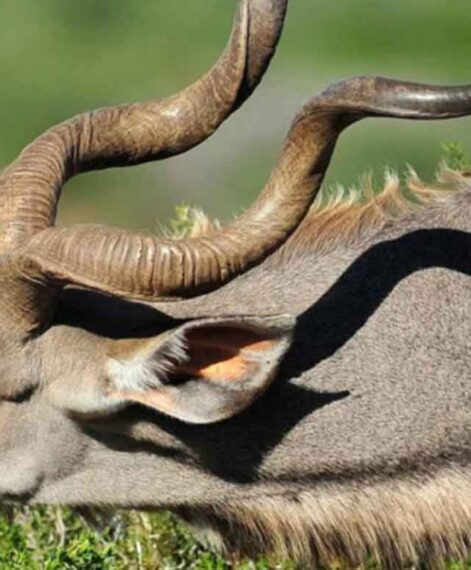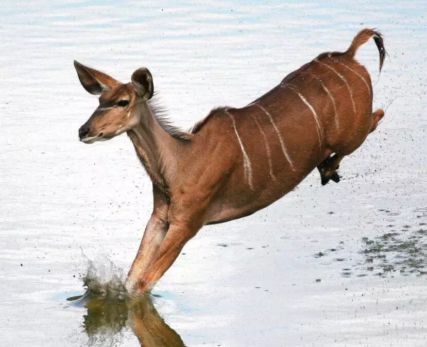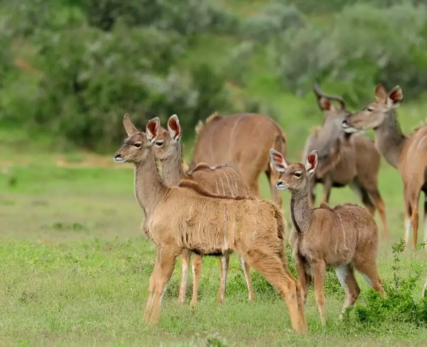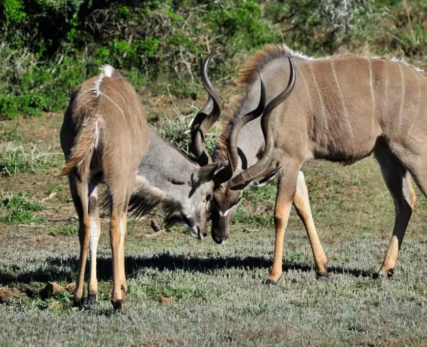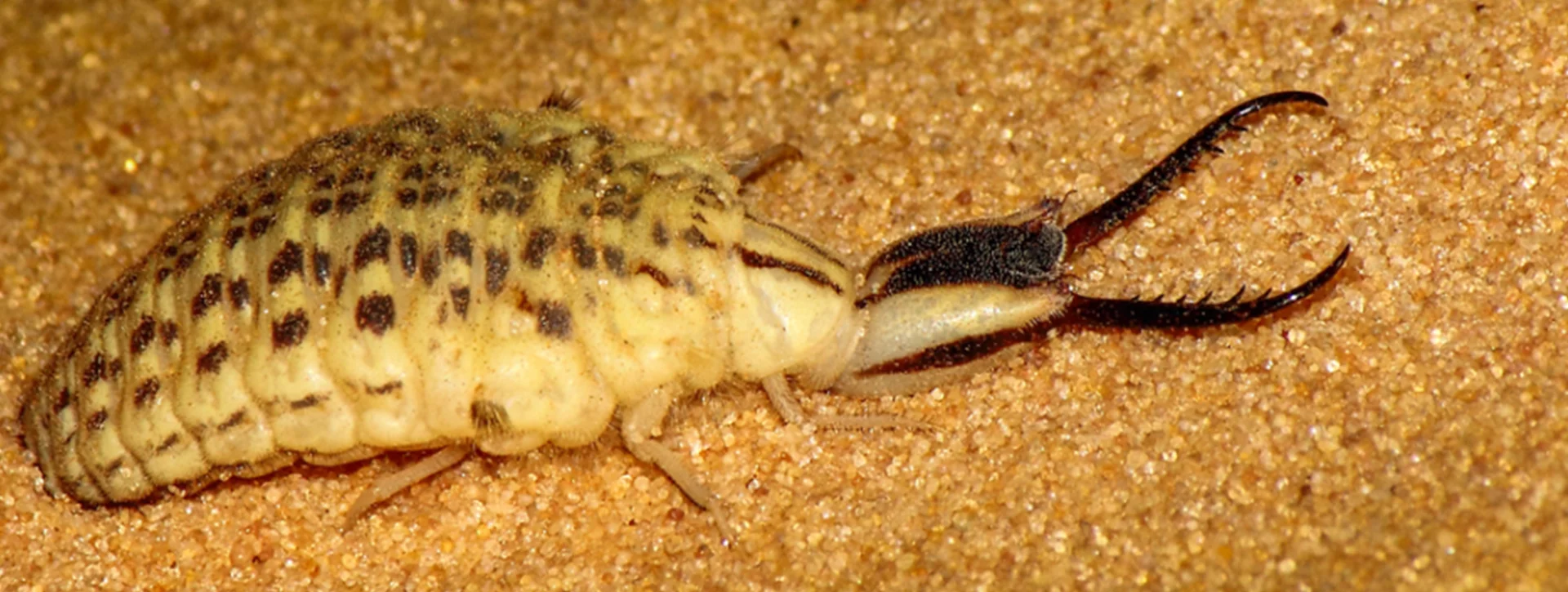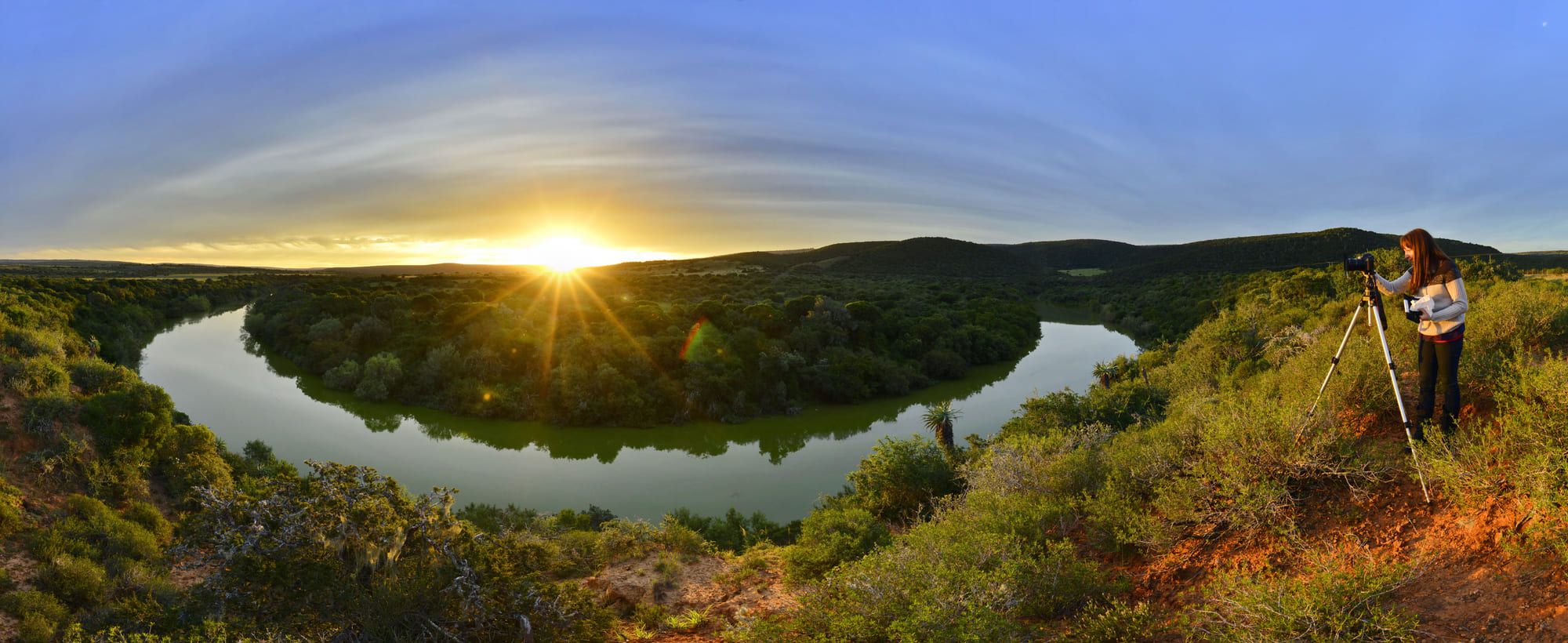The greater kudu is arguably one of the most beautiful species of antelope in southern Africa. This magnificent species is found throughout eastern and southern Africa. Despite occupying such widespread territory, they are sparsely populated in most areas, due to habitat loss, predation, hunting and disease.
Shamwari is home to the greater kudu (Tragelaphus strepsiceros). Here are some interesting facts about this gracious antelope:
Interesting Facts
1. Despite their large size, kudu are accomplished jumpers. They are super agile and can easily jump a height of 2 metres; when stressed they are known to jump as high as 3.5 metres!
